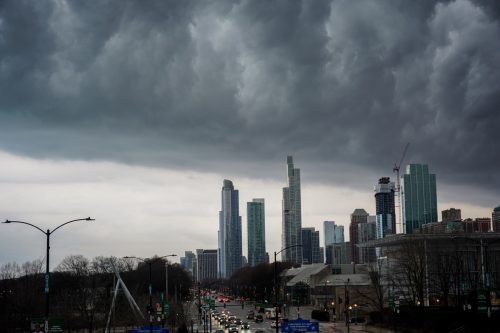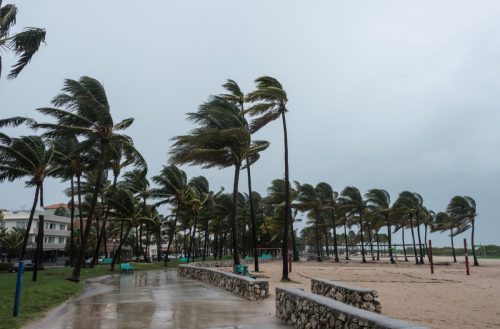New Spring Forecast Shows Which U.S. Regions Will Be Warmer and Wetter This Year
Several parts of the country are going to see a dramatic change from the cold.

Much of the U.S. has been pummeled with snow and frigid temperatures over the last couple months—but that'll soon be a distant memory. The National Oceanic and Atmospheric Administration's (NOAA) Climate Prediction Center (CPC) just released its three-month outlook for March to May, and it looks like some people should expect a dramatic change from the recent winter weather.
According to the CPC, the current El Niño climate pattern is forecast to fade away in the spring. But it's still expected to impact weather patterns throughout the next few months before we transition to a La Niña pattern in the summer.
"Given the expected rapid transition from El Niño to La Niña, and the increasing global warming trend, it has become difficult to forecast anything but anomalous warmth as we head towards summer," Todd Crawford, PhD, vice president of meteorology at Atmospheric G2, told The Weather Channel.
But along with above-average temperatures, the CPC is also anticipating above-average precipitation for some parts of the U.S. To find out which U.S regions will be warmer and wetter this spring, read on for a breakdown of the agency's new spring forecast.
RELATED: "Extended Winter" May Keep Things Cold in These Regions, Meteorologists Predict.
West

Most of the West is looking at above-average temperatures from March to May. The states in this region with the highest probability for warmer weather include Washington and Oregon, which have a 60 to 80 percent chance of experience above-normal temps.
But while these parts of the West will likely experience hotter weather this spring, they aren't expected to find any relief from the rain. Much of the West is expected to experience normal seasonal precipitation, though the CPC predicts that Washington, Oregon, and parts of Idaho and Montana, could see precipitation levels leaning below normal.
RELATED: Meteorologists Warn That "Super El Niño" Could Lead to Intense Hurricane Season.
Midwest

Many states in the Midwest are likely to see warmer weather this spring as well. North Dakota, South Dakota, Minnesota, Iowa, Illinois, Wisconsin, Michigan, Indiana, and Ohio, are all forecast to have a 33 to 60 percent chance of experiencing above-average temperatures throughout March, April, and May.
Some of these states might also have a wetter spring, too. The eastern half of Nebraska and Kansas, along with the southern part of Iowa, Illinois, Indiana, and Ohio, and the entire state of Montana have a 33 to 50 percent chance of above-normal precipitation over the next three months.
RELATED: "Significant" Storms Will Bring Rain and 12 Inches of Snow to These Regions.
South

In the South, the biggest worry is more rain in the spring. Every state in this region is predicted to see higher than normal precipitation, but the highest risk is situated right around the lower tip of South Carolina, the bottom half of Georgia, and the northern part of Florida.
Several states are also likely to see warmer conditions as well. There is a 33 to 50 percent chance of above-average temperatures this spring in the upper part of Georgia, as well as South Carolina, North Carolina, Tennessee, Kentucky, West Virginia, Virginia, Maryland, and Delaware.
Northeast

Besides Washington state, the highest chance of above-average temperatures this spring is in Northeastern states. Maine, Vermont, New Hampshire, Connecticut, New York, along with the top half of Pennsylvania and New Jersey, have a 50 to 60 percent chance of warmer than normal weather over the next three months.
In this region, an increased chance of rain during that same time is also expected for Pennsylvania, New Jersey, Connecticut, and Rhode Island, as well as the bottom part of New York and Massachusetts.
- Source: CPC: Three-Month Outlook Mar-Apr-May-2024
- Source: CPC: El Niño Discussion





















